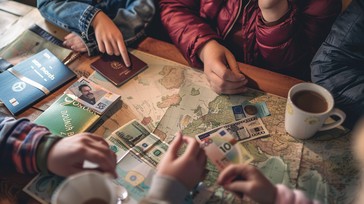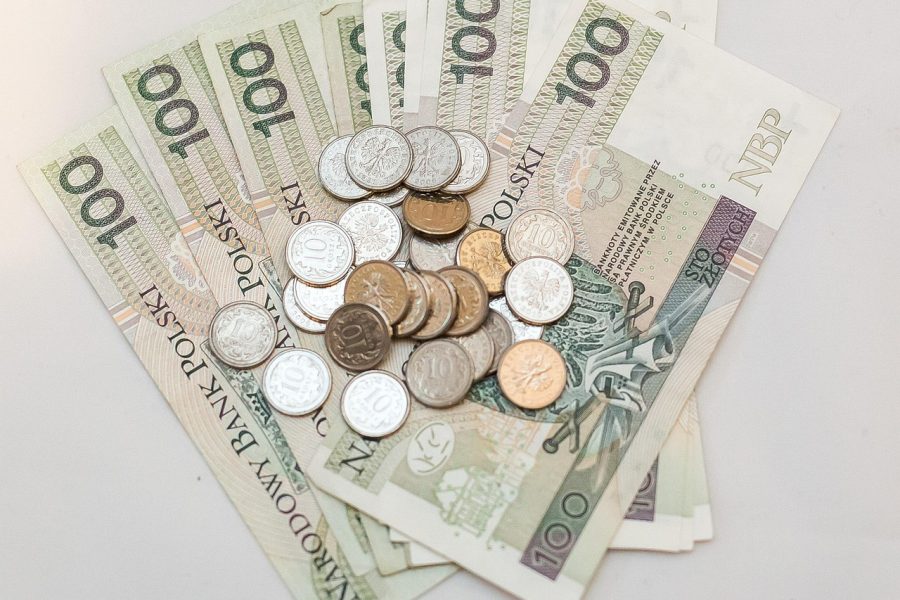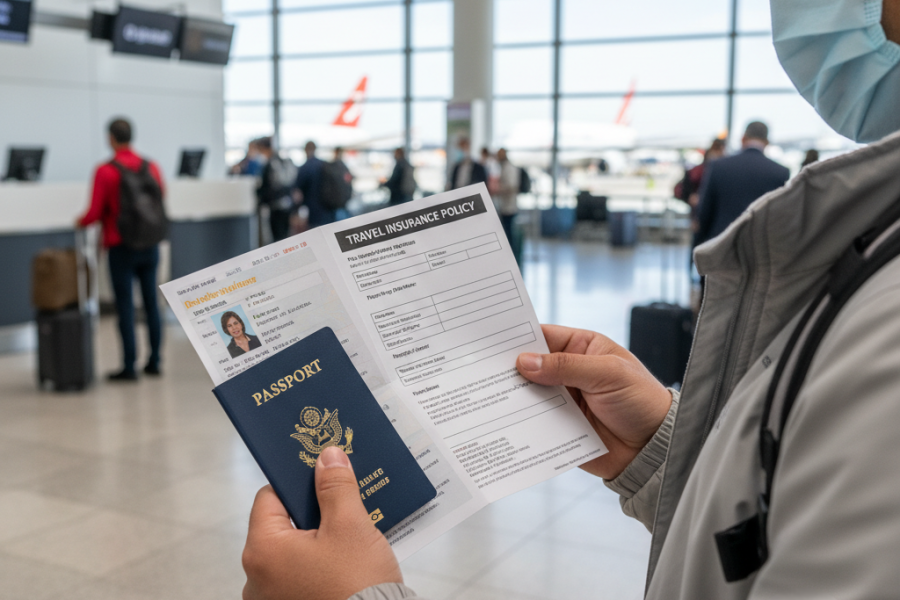One of the biggest questions travelers ask before heading overseas is, “How much cash should I carry?” It’s a smart question — because carrying too little can leave you helpless, and too much can be risky.
In 2025, most countries accept cards and digital payments, but cash still plays an important role in daily travel expenses. Whether you’re buying food at a street stall, tipping your guide, or paying for transportation, having the right amount of local currency makes your trip easier.
This guide breaks down how much cash you should carry when traveling abroad, depending on your destination, travel style, and budget — so you can explore worry-free.
1. How to Decide How Much Cash to Carry
Before looking at country-specific amounts, consider three key factors:
-
Destination: Some countries still rely heavily on cash.
-
Trip duration: A longer trip means more daily cash.
-
Travel habits: Backpackers spend less daily cash than luxury travelers.
As a rule of thumb, carry enough cash for 2–3 days of expenses and rely on cards or ATMs for the rest. This keeps you prepared without carrying unnecessary risk.
A good mix is 70% digital + 30% cash for most destinations.
2. Europe – Moderate Cash Culture
Europe is largely card-friendly, but cash is useful for small purchases, public transport, and local markets.
-
Western Europe (France, Germany, Italy): €100–€150 in cash is ideal for a weeklong trip.
-
Eastern Europe (Czech Republic, Hungary, Poland): $100–$120 equivalent in local currency helps for street vendors and taxis.
-
Scandinavia (Sweden, Norway, Finland): These are nearly cashless countries — $50 worth of local currency is enough for emergencies.
Tip: ATMs are easy to find across Europe, but always check withdrawal fees before using foreign cards.
3. Asia – Cash Still rules in Many Places
In Asia, especially in local markets or smaller towns, cash is king.
-
Thailand, Vietnam, Indonesia: Carry $150–$200 in local currency for a week.
-
Japan: Despite being high-tech, Japan still loves cash — carry ¥20,000–¥30,000 ($130–$200).
-
India: $100–$150 in Indian rupees is usually enough, since mobile payments are popular in cities but not in remote areas.
Tip: Keep small bills for tuk-tuks, temples, and street food — many vendors don’t have change for big notes.
4. Middle East – Mix of Modern and Traditional
The Middle East has modern payment systems, but cash is still widely used in souks, taxis, and local eateries.
-
United Arab Emirates (Dubai, Abu Dhabi): $100–$150 in dirhams covers small expenses; cards work everywhere else.
-
Jordan & Egypt: $100–$200 in local currency is handy for tours and market shopping.
-
Turkey: $100–$150 in Turkish lira is perfect for street food, souvenirs, and local tips.
Tip: Avoid changing large sums at airports — local exchanges offer better rates.
5. North America – Go Light on Cash
The U.S. and Canada are highly digital, but cash is useful for tips and small purchases.
-
United States: $50–$100 in cash for a week is enough for tipping and taxis.
-
Canada: $50–$80 in Canadian dollars will cover small shops or emergency use.
-
Mexico: Carry $100–$150 in pesos, especially if visiting local markets or smaller towns.
Tip: Keep some small bills for restaurants and valet tips — not every place accepts contactless payments for tips.
6. Africa – Cash Is a Must in Many Regions
In many African destinations, cash is still the main way to pay.
-
Morocco: $150–$200 in dirhams for food, shopping, and taxis.
-
Kenya & Tanzania: $150–$250 equivalent in local currency — smaller towns are mostly cash-based.
-
South Africa: $100–$150 in rand is ideal since most cities accept cards.
Tip: Always use ATMs inside banks or hotels for better safety and exchange rates.
7. Oceania – Card First, Cash as Backup
Countries like Australia and New Zealand are almost cashless, but it’s still smart to carry some local currency.
-
Australia: $50–$100 AUD for local markets or parking meters.
-
New Zealand: $50–$80 NZD for small expenses or emergencies.
Tip: Some small rural cafes may still prefer cash, especially in remote areas.
8. Tips for Handling Cash Safely While Traveling
Carrying cash abroad is convenient, but safety comes first. Here’s how to manage it smartly:
✅ Split your cash — keep small amounts in your wallet and the rest in a hotel safe or money belt.
✅ Use hidden pouches for crowded areas.
✅ Keep a backup card and digital wallet for emergencies.
✅ Always exchange money at licensed counters or ATMs.
These habits will help you travel confidently without worrying about theft or overspending.
The right amount of cash depends on where you’re going and how you travel. Carrying a small amount of local currency makes life easier, especially for small shops and local experiences.
As a general rule, enough cash for two days’ expenses is all you need. The rest can safely stay in your bank or digital wallet.
So before you pack your bags, research your destination’s payment culture and plan ahead. With the right balance of cash and cards, you’ll travel smart, safe, and stress-free.
And if you’re wondering why cash still matters abroad, check out our related post — “Why Carrying Cash Abroad Still Matters in 2025: A Smart Traveler’s Guide.”






Leave a Comment